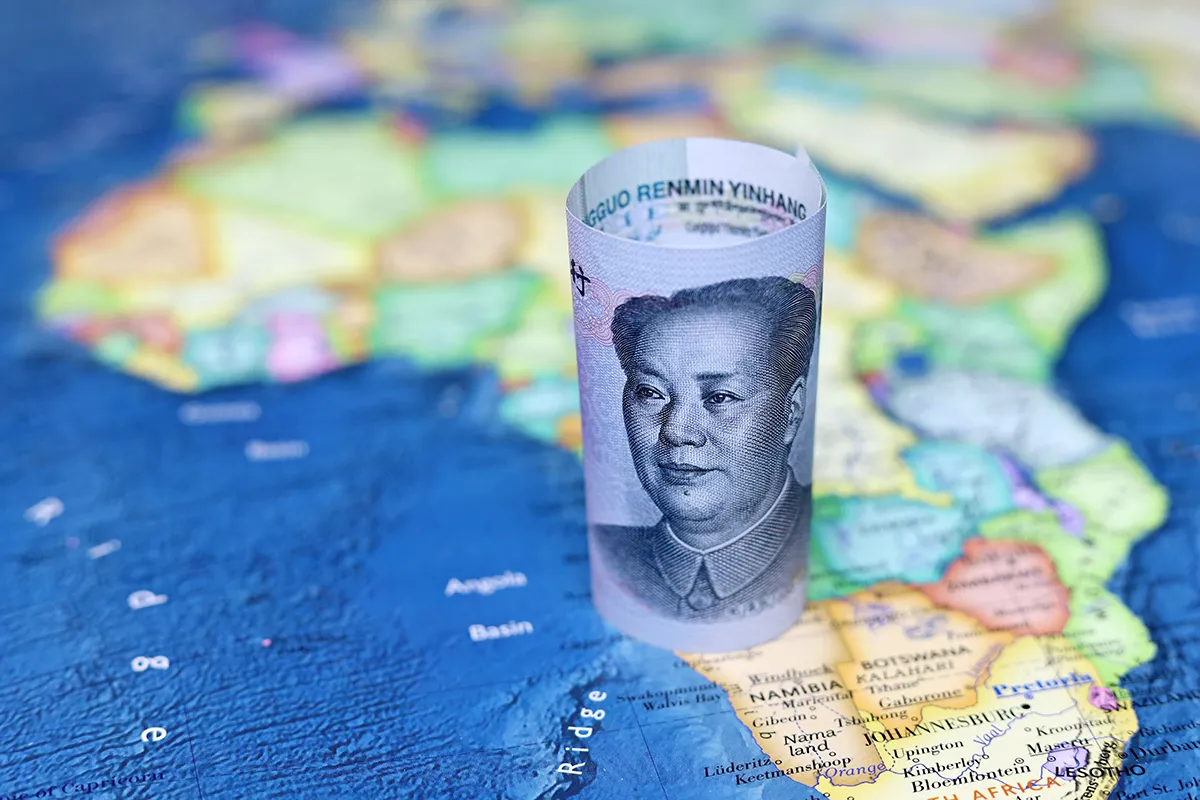The cryptocurrency market experienced a dramatic rebound on Sunday following a provocative social media post from US President Donald Trump, who took to his Truth Social platform to propose an ambitious—and controversial—plan to distribute $2,000 cash payments to American citizens, funded entirely by tariff revenue collected from international trade. This unexpected announcement sent shockwaves through financial markets and triggered an immediate surge in digital asset prices, with major cryptocurrencies posting significant gains as investors scrambled to position themselves for what some are calling a potential repeat of the historic 2020-2021 stimulus-driven bull run.
Trump’s proposal, posted on his proprietary Truth Social platform, claimed that the United States is currently collecting “trillions of dollars” in tariff revenue through his administration’s aggressive trade policies. According to the former and current president’s post, this massive influx of funds should be strategically allocated to accomplish dual objectives: reducing the ballooning national debt while simultaneously providing direct financial relief to ordinary American citizens. However, Trump was careful to specify that high-income earners would be excluded from receiving these payments, targeting the relief toward middle and lower-income households.
Build the future you deserve. Get started with our top-tier Online courses: ACCA, HESI A2, ATI TEAS 7, HESI EXIT, NCLEX-RN, NCLEX-PN, and Financial Literacy. Let Serrari Ed guide your path to success. Enroll today.
Political and Legal Context of Trump’s Tariff Policies
The timing of Trump’s announcement carries particular significance given the current legal challenges facing his tariff policies. The US Supreme Court is actively reviewing the constitutionality and legality of several tariff decisions implemented during Trump’s previous administration, attempting to determine whether the executive branch exceeded its authority in unilaterally imposing these trade restrictions without adequate Congressional oversight or approval.
Despite this ongoing judicial scrutiny, Trump’s Truth Social post doubled down on defending his tariff strategy, characterizing these trade policies as instrumental to America’s current economic performance and presenting the revenue generated as validation of his approach. The president argued that the substantial tariff collections demonstrate both the effectiveness of his trade policies and America’s strengthened negotiating position in international commerce.
The legal questions surrounding presidential tariff authority are complex and rooted in various trade laws that grant the executive branch certain emergency powers. Critics have argued that Trump’s expansive interpretation of these powers represents executive overreach, while supporters contend that protecting American economic interests requires precisely this kind of decisive action. The Supreme Court’s eventual ruling could have far-reaching implications for presidential authority in trade policy and, by extension, the sustainability of the revenue stream Trump is proposing to tap for his dividend payments.
Immediate Market Response: Digital Assets Soar
The cryptocurrency market’s response to Trump’s proposal was swift and emphatic, with major digital assets posting impressive gains within hours of the announcement. This rapid price appreciation underscores the market’s sensitivity to potential liquidity injections and the strong correlation between government stimulus measures and cryptocurrency valuations.
Bitcoin, the world’s largest cryptocurrency by market capitalization, surged dramatically to break through the $106,000 threshold—a price level that had previously served as stubborn resistance. This breakthrough represents not only a significant technical achievement but also reinforces Bitcoin’s narrative as a store of value and hedge against monetary expansion. The move above $106,000 places Bitcoin within striking distance of its all-time highs and has rekindled discussions about whether the cryptocurrency could ultimately reach the widely discussed $150,000 or even $200,000 targets that some analysts have projected.
Ethereum, the second-largest cryptocurrency and the foundation for much of the decentralized finance (DeFi) ecosystem, demonstrated equally impressive strength by leaping past the $3,600 price level. Ethereum’s rally is particularly notable given the network’s recent transition to proof-of-stake consensus and ongoing developments in layer-2 scaling solutions. The price surge suggests renewed investor confidence in Ethereum’s long-term value proposition as the infrastructure layer for Web3 applications, non-fungible tokens (NFTs), and decentralized financial services.
Solana, often positioned as an “Ethereum killer” due to its high-speed, low-cost transaction capabilities, rocketed well past $165, demonstrating that the market enthusiasm extended beyond just the top two cryptocurrencies. Solana’s performance has been particularly impressive given the network’s recovery from previous technical issues and the recent surge in activity on Solana-based applications, particularly in the meme coin and decentralized exchange sectors.
Beyond these major assets, the broader cryptocurrency market experienced significant gains across multiple sectors, with mid-cap and small-cap altcoins posting even more dramatic percentage increases as traders sought leveraged exposure to the risk-on sentiment sweeping through digital asset markets.
Historical Parallels: The 2020-2021 Stimulus Precedent
Cryptocurrency investors and analysts immediately drew comparisons between Trump’s proposed tariff dividend and the series of stimulus checks distributed during the COVID-19 pandemic in 2020 and 2021. Those direct payments, which included checks ranging from $600 to $1,400 depending on the relief package, coincided with one of the most spectacular bull runs in cryptocurrency history and left an indelible mark on how market participants think about the relationship between government stimulus and digital asset prices.
During that extraordinary 2020-2021 period, the cryptocurrency market experienced returns that seemed almost surreal in retrospect. Bitcoin, which had crashed to approximately $3,800 during the March 2020 market panic, subsequently rallied to nearly $69,000 by November 2021—representing an approximately 18-fold increase from its pandemic lows. This astronomical appreciation occurred against the backdrop of multiple rounds of fiscal stimulus, ultra-accommodative monetary policy from the Federal Reserve, and a growing narrative that cryptocurrency represented a hedge against currency debasement and inflation.
Ethereum’s performance during this period was even more remarkable, surging from lows around $85 to peaks above $4,800—nearly a 56-fold increase. This rally was driven not only by general cryptocurrency enthusiasm but also by Ethereum’s emergence as the dominant platform for DeFi applications, which exploded in popularity during 2020 and 2021, and the NFT boom that captured mainstream attention.
Smaller alternative cryptocurrencies, often referred to as “altcoins,” delivered even more extreme returns during this period, with numerous projects posting 100-fold, 500-fold, or even larger gains. Meme coins like Dogecoin and Shiba Inu became cultural phenomena, attracting retail investors who had never previously engaged with cryptocurrency markets.
Research and analysis from that period revealed that a meaningful portion of stimulus check recipients allocated at least some of their payments to cryptocurrency purchases, viewing digital assets as attractive speculative investments or long-term holdings. Surveys conducted by various cryptocurrency exchanges indicated that anywhere from 10% to 20% of stimulus recipients reported using some portion of their payments to purchase Bitcoin, Ethereum, or other cryptocurrencies.
Market Psychology and Analyst Perspectives
Prominent cryptocurrency analyst Money Ape, who has built a substantial following through prescient market calls and technical analysis, characterized Trump’s tariff dividend proposal as essentially a “modern stimulus check.” In commentary shared across social media platforms, Money Ape argued that even partial implementation of the proposal—or payments that are delayed or distributed in smaller increments than the proposed $2,000—could trigger a significant market reaction similar to what was observed during the pandemic stimulus era.
This analysis resonates with broader market psychology theories about how anticipated liquidity injections affect asset prices. Financial markets frequently exhibit a tendency to price in expected future events well before those events materialize, a phenomenon sometimes referred to as “buying the rumor, selling the news.” In this case, the mere possibility of $2,000 payments to millions of American households has been sufficient to drive significant capital flows into risk assets like cryptocurrency.
Traders and analysts on X (formerly Twitter) and other social media platforms have been actively discussing the potential market implications of direct payments. Many argue that such payments function as rocket fuel for market liquidity, particularly when recipients have their basic needs met and view the payments as discretionary income that can be deployed into speculative investments.
The liquidity argument holds particular weight in cryptocurrency markets, which remain relatively small compared to traditional financial markets. Even modest capital inflows can drive dramatic price appreciation due to the limited supply of many cryptocurrencies and the tendency for existing holders to hold assets rather than sell them at current prices—a phenomenon known as “diamond hands” in crypto culture.
Some market participants have also highlighted the psychological impact of direct government payments on risk appetite. When individuals receive unexpected windfalls, particularly during periods of economic uncertainty, they often become more willing to take investment risks they might otherwise avoid. This behavioral shift can create self-reinforcing market dynamics where rising prices attract more participants, which drives further price appreciation, creating a feedback loop that characterizes bull market conditions.
One decision can change your entire career. Take that step with our Online courses in ACCA, HESI A2, ATI TEAS 7, HESI EXIT, NCLEX-RN, NCLEX-PN, and Financial Literacy. Join Serrari Ed and start building your brighter future today.
The Political Reality Check: Congressional Hurdles
Despite the market enthusiasm and speculative excitement surrounding Trump’s proposal, sober analysis reveals substantial obstacles standing between the president’s social media post and actual implementation of tariff dividend payments. The fundamental challenge is constitutional and procedural: the president cannot unilaterally distribute federal funds to citizens. Such action would require Congressional approval through the regular legislative process, which presents numerous opportunities for the proposal to be modified, delayed, or defeated entirely.
The path to implementation would require drafting specific legislation detailing the payment amounts, eligibility criteria, funding mechanisms, and administrative procedures. This legislation would need to be introduced in either the House of Representatives or Senate, referred to the appropriate committees, subjected to hearings and markup sessions, passed by both chambers of Congress, and ultimately signed into law by the president.
Each of these steps presents potential obstacles. Committee chairs could decline to advance the legislation, or could substantially modify its provisions. Floor votes could fail due to opposition from either party or defections within the president’s own party. The process could also become entangled with other legislative priorities, budget negotiations, or political disputes over unrelated issues—a common occurrence in the American legislative system.
Furthermore, questions would inevitably arise about the actual tariff revenue available to fund such payments and whether Trump’s claims about “trillions of dollars” in collections are accurate. The Congressional Budget Office and other non-partisan analytical bodies would likely be called upon to provide estimates of tariff revenue and the budgetary impact of the proposed payments, potentially complicating the political dynamics.
Fiscal hawks in Congress might oppose the proposal on the grounds that any surplus tariff revenue should be dedicated to deficit reduction rather than distributed as payments. Others might argue that the tariff policies generating this revenue are themselves harmful to American consumers and businesses, making it inappropriate to effectively “rebate” a portion of what they view as an inefficient tax.
As of the time of this writing, no official legislative proposal implementing Trump’s tariff dividend has been introduced in either chamber of Congress, and no formal statements from Congressional leadership have addressed the feasibility or timeline for considering such legislation.
Market Implications Despite Uncertainty
Interestingly, the substantial uncertainty surrounding whether Trump’s proposal will actually be implemented has done little to dampen cryptocurrency market enthusiasm. This seemingly paradoxical response reflects several dynamics at work in digital asset markets.
First, cryptocurrency markets have historically exhibited a strong tendency to rally on positive narratives and possibilities rather than requiring concrete confirmation before pricing in potential outcomes. This “buy the rumor” mentality means that the mere prospect of stimulus payments can drive significant capital flows, with market participants willing to take positions based on what they hope might happen rather than waiting for definitive confirmation.
Second, the proposal has reinforced broader narratives about cryptocurrency as a beneficiary of expansionary fiscal and monetary policies. Even if this specific tariff dividend never materializes, it has reminded market participants of the powerful correlation between government stimulus measures and cryptocurrency price appreciation, potentially attracting new capital from investors who missed previous rallies.
Third, improved risk appetite and liquidity expectations have effects that extend beyond just direct stimulus payment scenarios. The conversation itself around potential payments has shifted market psychology toward a more optimistic, risk-tolerant stance that benefits speculative assets generally. Cryptocurrency markets, being among the highest-beta assets available to retail investors, naturally benefit from this shift in sentiment.
Market data from cryptocurrency exchanges shows that trading volumes have surged significantly since Trump’s announcement, indicating genuine participant interest rather than just thin, low-liquidity price moves. Options market data also suggests that traders are positioning for continued volatility and potential upside, with call option volumes (bets on rising prices) substantially exceeding put option volumes (bets on declining prices).
Broader Economic Context and Implications
Trump’s tariff dividend proposal also occurs within a broader economic context that includes ongoing debates about inflation, monetary policy, government spending, and the role of digital assets in the financial system. The US Treasury and Federal Reserve have been navigating the complex challenge of maintaining price stability while supporting economic growth, making any proposal for large-scale direct payments particularly sensitive from a monetary policy perspective.
Critics of the proposal have noted potential inflationary implications of distributing hundreds of billions of dollars to consumers, particularly if the economy is already operating near full capacity. Additional consumer spending could exacerbate price pressures and potentially force the Federal Reserve to maintain higher interest rates for longer, which could ultimately prove counterproductive for risk assets including cryptocurrency.
Supporters counter that tariff revenue represents funds collected from foreign entities (through the indirect effects of tariffs on import prices) rather than deficit spending or monetary expansion, and therefore should not carry the same inflationary concerns as other stimulus measures. This argument remains contentious among economists and policymakers.
The cryptocurrency community has generally embraced the proposal enthusiastically, viewing any form of direct payment as likely to boost digital asset adoption and prices. The narrative that cryptocurrency benefits from currency debasement and expansionary policy has become deeply embedded in crypto culture, even as some economists question whether this relationship will persist as markets mature.
Looking Ahead: Scenarios and Possibilities
As the cryptocurrency market continues digesting Trump’s tariff dividend proposal and its potential implications, several possible scenarios could unfold:
Full Implementation Scenario: Congress passes legislation implementing the $2,000 payments as proposed, triggering a substantial cryptocurrency rally as funds flow into digital assets. This scenario would likely produce the most dramatic market response and could potentially initiate a sustained bull market if combined with other favorable conditions.
Partial Implementation Scenario: Congress passes modified legislation providing smaller payments, means-tested restrictions, or phased distributions. This compromise outcome would likely still provide meaningful support for cryptocurrency prices, though perhaps less dramatically than full implementation.
Legislative Failure Scenario: Congress fails to advance legislation implementing the proposal, either due to political opposition, procedural obstacles, or competing priorities. In this scenario, cryptocurrency markets might experience a “sell the news” correction as the initial enthusiasm fades, though the extent of any decline would depend on other market factors.
Extended Uncertainty Scenario: The proposal remains in legislative limbo for an extended period, with unclear prospects for passage. Markets might continue trading based on perceived probability of eventual implementation, with volatility driven by political developments and statements from key lawmakers.
Regardless of which scenario ultimately unfolds, Trump’s tariff dividend proposal has already achieved one significant effect: it has redirected market attention to the potential for government stimulus to drive cryptocurrency prices and has reminded investors of the spectacular returns that previous stimulus measures helped generate. This psychological impact may prove meaningful even if the proposal itself never becomes reality.
Conclusion
Donald Trump’s proposal to distribute $2,000 tariff-funded payments to Americans has injected fresh energy into cryptocurrency markets and rekindled memories of the extraordinary 2020-2021 bull run when stimulus checks helped fuel unprecedented digital asset appreciation. Bitcoin’s surge above $106,000, Ethereum’s climb past $3,600, and strong performance across the broader crypto market demonstrate the powerful effect that stimulus speculation can have on digital asset valuations.
However, the substantial gap between a social media post and actual implementation cannot be overlooked. Congressional approval would be required, presenting numerous political and procedural obstacles that could delay, modify, or prevent the proposal from becoming reality. The cryptocurrency market’s willingness to rally despite this uncertainty reflects both the speculative nature of digital assets and the strength of conviction among market participants that stimulus measures—whether from this proposal or future sources—will continue driving cryptocurrency adoption and prices higher.
As this situation develops, market participants would be wise to monitor both the political progress of any actual legislation and the technical price levels that could signal whether the current rally has staying power or represents merely a temporary speculative spike. The coming weeks and months will reveal whether Trump’s tariff dividend becomes a market-moving reality or remains merely an intriguing “what if” scenario that briefly captured the crypto world’s imagination.
Ready to take your career to the next level? Join our Online courses: ACCA, HESI A2, ATI TEAS 7 , HESI EXIT , NCLEX – RN and NCLEX – PN, Financial Literacy!🌟 Dive into a world of opportunities and empower yourself for success. Explore more at Serrari Ed and start your exciting journey today! ✨
Track GDP, Inflation and Central Bank rates for top African markets with Serrari’s comparator tool.
See today’s Treasury bonds and Money market funds movement across financial service providers in Kenya, using Serrari’s comparator tools.
Photo source: Google
By: Montel Kamau
Serrari Financial Analyst
11th November, 2025
Article, Financial and News Disclaimer
The Value of a Financial Advisor
While this article offers valuable insights, it is essential to recognize that personal finance can be highly complex and unique to each individual. A financial advisor provides professional expertise and personalized guidance to help you make well-informed decisions tailored to your specific circumstances and goals.
Beyond offering knowledge, a financial advisor serves as a trusted partner to help you stay disciplined, avoid common pitfalls, and remain focused on your long-term objectives. Their perspective and experience can complement your own efforts, enhancing your financial well-being and ensuring a more confident approach to managing your finances.
Disclaimer: This article is for informational purposes only and does not constitute financial advice. Readers are encouraged to consult a licensed financial advisor to obtain guidance specific to their financial situation.
Article and News Disclaimer
The information provided on www.serrarigroup.com is for general informational purposes only. While we strive to keep the information up to date and accurate, we make no representations or warranties of any kind, express or implied, about the completeness, accuracy, reliability, suitability, or availability with respect to the website or the information, products, services, or related graphics contained on the website for any purpose. Any reliance you place on such information is therefore strictly at your own risk.
www.serrarigroup.com is not responsible for any errors or omissions, or for the results obtained from the use of this information. All information on the website is provided on an as-is basis, with no guarantee of completeness, accuracy, timeliness, or of the results obtained from the use of this information, and without warranty of any kind, express or implied, including but not limited to warranties of performance, merchantability, and fitness for a particular purpose.
In no event will www.serrarigroup.com be liable to you or anyone else for any decision made or action taken in reliance on the information provided on the website or for any consequential, special, or similar damages, even if advised of the possibility of such damages.
The articles, news, and information presented on www.serrarigroup.com reflect the opinions of the respective authors and contributors and do not necessarily represent the views of the website or its management. Any views or opinions expressed are solely those of the individual authors and do not represent the website's views or opinions as a whole.
The content on www.serrarigroup.com may include links to external websites, which are provided for convenience and informational purposes only. We have no control over the nature, content, and availability of those sites. The inclusion of any links does not necessarily imply a recommendation or endorsement of the views expressed within them.
Every effort is made to keep the website up and running smoothly. However, www.serrarigroup.com takes no responsibility for, and will not be liable for, the website being temporarily unavailable due to technical issues beyond our control.
Please note that laws, regulations, and information can change rapidly, and we advise you to conduct further research and seek professional advice when necessary.
By using www.serrarigroup.com, you agree to this disclaimer and its terms. If you do not agree with this disclaimer, please do not use the website.
www.serrarigroup.com, reserves the right to update, modify, or remove any part of this disclaimer without prior notice. It is your responsibility to review this disclaimer periodically for changes.
Serrari Group 2025












